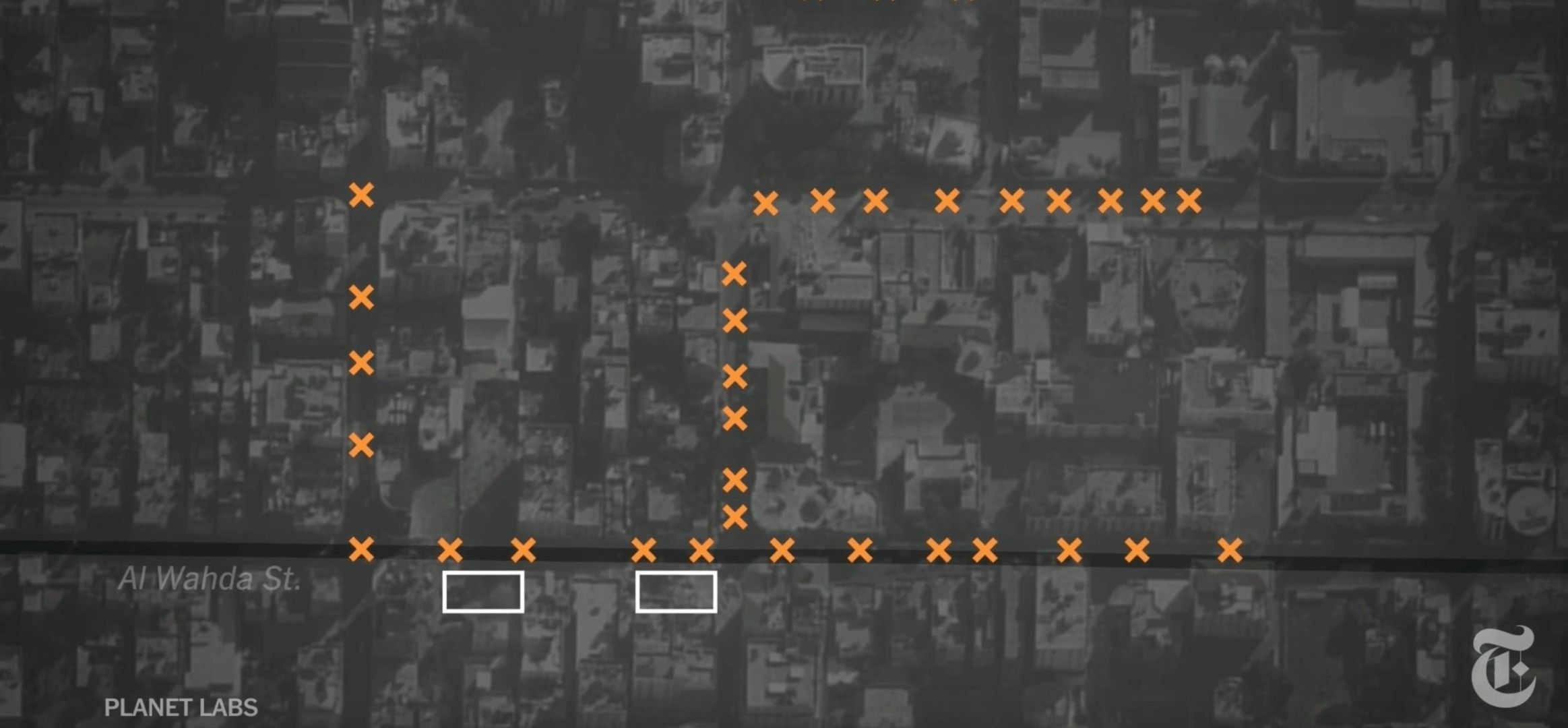The New York Times on June 24 published a visual “investigation” titled, “Gaza’s Deadly Night: How Israeli Airstrikes Killed 44 People.” The 15-minute video insinuates that the Israel Defense Forces caused the collapse of apartment buildings in the Gaza Strip by carelessly deploying bombs in an attempt to destroy underground terrorist infrastructure built by Hamas in an urban center. That the NYT never concludes that the bombs were directly responsible for the tragedy in and of itself suggests that the title was devised with a view to smearing the Jewish state.
This is further reinforced by the one-sided view of the 11-day conflict in May, as well as the fact that only two external sources are directly cited throughout the video — a member of the Red Cross and another from Amnesty International. The latter recommends, without concrete evidence of what caused the event, that Israel be referred to the International Criminal Court in The Hague for having committed a potential war crime.
That Hamas “likely” breached international law by placing military assets in a populated area is, by contrast, for the most part minimized.
Join the fight for Israel’s fair coverage in the news
No Evidence That Israel Targeted the Buildings
The NYT “investigation” focuses on the IDF’s May 16 operation that targeted Hamas military infrastructure built below the Rimal neighborhood of Gaza City, the ostensible “seat of government” of the US-designated terrorist organization that rules the Palestinian enclave. In the aftermath of what the IDF confirmed were precision strikes — with the NYT itself explicitly noting that there is “no evidence that Israel struck or directly targeted the apartment buildings” — three adjacent residential structures nevertheless somehow collapsed.
Irrespective of the fact that the NYT never proved causation between the two events, the video opens with the assertion that, “An Israeli airstrike has just taken down three apartment buildings in Gaza, killing 44 people.” It then casts doubt (time code: 00:30) on Israel’s commitment to protecting civilians by suggesting that, “Israel said [its campaign] targeted Hamas, the group that governs Gaza.” [emphasis added]
Related Reading: Unreported: IDF Values Life as Hamas Aims to Maximize Casualties
In fact, the IDF takes extreme measures to prevent loss of life, which is all the more necessary and true in Gaza, a densely populated region where terrorists use civilians as human shields. Indeed, research by the Meir Amit Intelligence and Terrorism Information Center found that some 48 percent of all Palestinians killed during the war were affiliated with terrorist groups. Of the 234 deaths reported due to any Israeli involvement, at least 112 were connected to Hamas, Palestinian Islamic Jihad, and other terror factions. An additional, 21 people were killed due to Hamas’ activities, including when rockets intended to strike Israel landed short in Gaza. At least five others, according to the center, died of unknown causes.
When striking military targets in civilian neighborhoods, Israeli uses missiles that eyewitnesses have described as “very precise.” In the NYT video (10:57), unnamed military experts specifically note that the bombs dropped on May 16 “penetrated deep underground.”
What, then, happened?
If no Israeli bombs hit the buildings in Rimal, as confirmed in a map (below) shown in the NYT video, then the “investigation” is necessarily incomplete at best. The New York Times does not explain why the May 16 incident happened. It cannot be stressed enough that this fundamental question remains unanswered.

This NYT map (3:14) confirms that no bomb hit the apartment buildings (in white).
In fact, not one military expert is directly cited or asked to appear on camera by the NYT to explain what could have potentially caused the buildings to collapse. This, even though the video mentions that, “Israel says Hamas intentionally builds military infrastructure under residential buildings, which would be a violation of the laws of war.” [emphasis added]. In effect, the NYT obfuscates the fact that there is widely available evidence that the terror organization uses residential buildings, hotels, hospitals and even UNRWA schools as launching pads for attacks against Israel.
Nevertheless, the entire foundation upon which the video resides is that Israel is at fault.
The New York Times didn’t even bother to include Hamas’ statement on the existence of terror tunnels or command centers under the Rimal neighborhood. In a May 26 Wall Street Journal article, Hamas spokesman Basem Naim was quoted as saying: “How to defend ourselves, with tunnels or without tunnels, where to have the tunnels, this is our choice.” Additionally, Yahya Sinwar, Hamas’ leader in Gaza, went so far as to admit that the terror group has headquarters “inside towers and residential buildings” in Gaza.
These facts are all highly relevant, yet omitted by the NYT.
Hamas’ War Crimes Get a Free Pass
Over the course of 11 days, Hamas indiscriminately fired over 4,000 rockets at Israeli cities. The NYT, however, claims that the launches were carried out “in retaliation for Israeli police raids and evictions in east Jerusalem.” As HonestReporting has pointed out over and over again, the assertion that Hamas’ war crimes were a “retaliation” for the Israeli response to Palestinian rioting is plain wrong.
For good measure, the NYT video also states that the IDF “responded [thereafter] with 11 days of bombing.” Again, this is false. Hamas during the war continuously fired rockets at Israeli population centers, thereby requiring the Jewish state to defend its citizens.
Overall, the aim of the NYT “investigation” is seemingly to build a case for Israelis to be prosecuted for war crimes in The Hague. In this respect, the Amnesty International expert mentioned above recommends that only Israel’s actions should be considered as part of the “ongoing investigation into Palestine by the International Criminal Court.”
Related Reading: ICC Gives Itself Authority to Adjudicate Israeli ‘War Crimes’
The slanted nature of the video comes as no surprise: Some of the staffers who worked on “Gaza’s Deadly Night” have a history of working for organizations hostile to Israel. Two NYT journalists, Evan Hill and Christiaan Triebert, previously worked for Qatar-based Al Jazeera, the news outlet honored by Hamas for its coverage of the recent conflict. Hill also served as a researcher at Human Rights Watch, while other staffers responsible for the video worked for Amnesty International, NGOs known for their bias against the Jewish state.
Moreover, one of the NYT‘s local Gazan reporters, Soliman Hijjy, seems to be a mouthpiece for the Hamas terror regime. On Twitter, the Palestinian videographer more than once justified war crimes against Israeli civilians by describing Palestinian terrorist attacks as “rockets from the resistance from the Gaza Strip towards settlements in response to the crimes of the Zionist occupation.”
The NYT video has proved once again that the outlet’s goal is to tarnish Israel. While the report lambasts the Jewish state, it lets Hamas — “the group that governs Gaza” — off the hook. The “visual investigation” focuses almost entirely on Israel’s alleged misdeeds while ignoring the fact that Hamas deliberately places Palestinians in harm’s way.
The latter is indisputable.
Meanwhile, the working theory of the NYT video is not only biased but also led to no conclusion.
These two realities are definitely connected.


